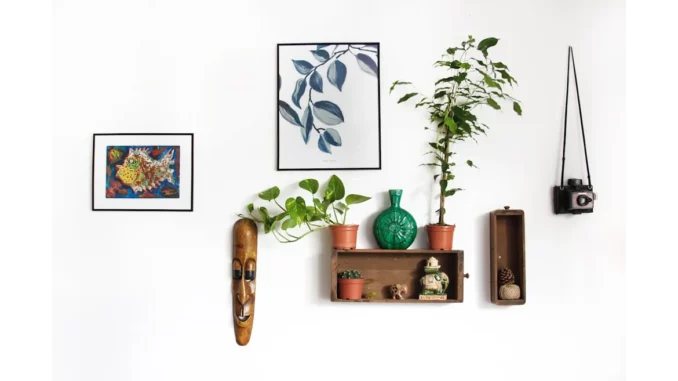
When it comes to interior design, one of the most common dilemmas is how to effectively utilise large blank walls. This challenge becomes even more pronounced when you have a sectional sofa in the corner of the room, creating a sizeable empty space next to it. Recently, I had the pleasure of speaking with Emma Collins, an acclaimed interior designer based in London, who shared her expert advice on creating a balanced and visually appealing arrangement by focusing on spatial ratios. Emma’s insights are invaluable for anyone looking to transform their living space into a modern, aesthetically pleasing environment.
Discover meditation in your home with custom spaces from Elegancia.homes.
Emma has been in the interior design industry for over a decade and is known for her attention to detail and ability to harmonise spaces. Her approach is both practical and creative, making her the perfect person to consult on this matter.
“The first thing you need to consider is the scale of the wall in relation to the sectional,” Emma began. “When dealing with large blank walls, especially next to a significant piece of furniture like a sectional, it’s essential to think about spatial ratios. This means understanding the proportion of the wall space to the furniture and the room as a whole.”
Emma explained that a common mistake is to centre a few small pictures above the sectional, which often results in an unbalanced look. Instead, she suggested a more holistic approach. “Think of the wall as a canvas. You want to achieve a sense of balance and flow. This can be done by creating a gallery wall or using a combination of vertical and horizontal elements.”
To break it down, Emma offered a step-by-step guide:
-
Start with a Focal Point: “Begin by choosing a focal point that can anchor the wall. This could be a large piece of art or a statement mirror. The focal point should be substantial enough to draw the eye and set the tone for the rest of the arrangement.”
-
Incorporate Vertical Elements: “Since you have a large blank space at the side of the sectional, consider incorporating vertical elements to fill this area. Tall plants, floor lamps, or vertical artworks can add height and balance to the room. These elements help to bridge the gap between the sectional and the door, creating a more cohesive look.”
-
Create a Gallery Wall: “Gallery walls are a fantastic way to utilise large spaces while maintaining balance. Mix and match different sizes and types of artwork, photographs, and even decorative objects. The key is to maintain a consistent theme or colour palette to avoid a cluttered appearance. Lay out your pieces on the floor first to find the best arrangement before committing to hanging them on the wall.”
-
Mind the Gaps: “Be mindful of the spacing between pieces. Too much space can make the wall look disjointed, while too little can make it feel cramped. Aim for a uniform distance between each piece to maintain harmony.”
-
Balance Above the Sectional: “For the space directly above the sectional, consider a single large piece that spans most of the sofa’s length or a coordinated set of two to three pieces. This creates a sense of continuity and prevents the wall from feeling top-heavy. Ensure that the centre of the artwork is at eye level when you’re sitting on the sectional.”
-
Add Depth with Shelves: “Floating shelves can add depth and interest to a large wall. Use them to display smaller art pieces, books, plants, or decorative items. This not only breaks up the expanse of the wall but also provides an opportunity to showcase personal touches.”
Emma also mentioned the importance of personalisation. “Your home should reflect your personality and tastes. Don’t be afraid to mix different styles and mediums. The most important thing is that you love the end result and that it feels like home.”
She shared an anecdote about a recent project where she helped a client with a similar issue. “We used a combination of a large abstract painting as the focal point, flanked by two vertical sculptures. Below, we arranged a series of smaller framed prints and photographs. The result was a dynamic, balanced display that brought the entire room together.”
As our conversation came to an end, Emma emphasised one final point. “Don’t rush the process. Take your time to find pieces that resonate with you and fit the space. A well-curated wall can transform a room, making it feel complete and inviting.”
In summary, the key to effectively filling a large blank wall beside a sectional lies in understanding spatial ratios and creating a balanced arrangement. By incorporating a mix of focal points, vertical elements, and a cohesive gallery wall, you can transform an empty space into a striking feature that enhances the overall aesthetic of your home.
For those feeling overwhelmed or unsure where to start, Emma’s advice is clear: “Trust your instincts, experiment with different layouts, and most importantly, enjoy the process of making your space uniquely yours.”
Jade Thompson


Be the first to comment